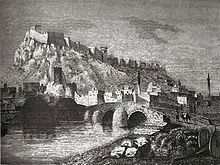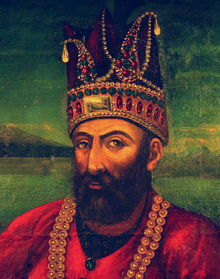
The Russo-Turkish War of 1828–1829 was sparked by the Greek War of Independence of 1821–1829. War broke out after the Ottoman Sultan Mahmud II closed the Dardanelles to Russian ships and revoked the 1826 Akkerman Convention in retaliation for Russian participation in the Battle of Navarino.

The Russo-Turkish War (1806–1812) between the Russian Empire and the Ottoman Empire was one of the Russo-Turkish Wars. Russia prevailed, but both sides wanted peace as they feared Napoleon's moves to the east.
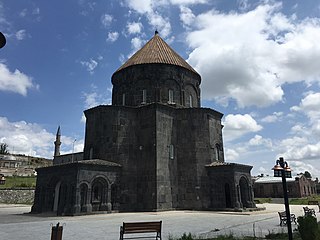
Kars is a city in northeast Turkey. It is the seat of Kars Province and Kars District. As of 2022, its population was 91,450. Kars, in classical historiography (Strabo), was in the ancient region known as Chorzene, part of the province of Ayrarat in the Kingdom of Armenia, and later the capital of the Bagratid Kingdom of Armenia from 929 to 961. Currently, the mayor of Kars is Türker Öksüz. The city had an Armenian ethnic majority until it was re-captured by Turkish nationalist forces in late 1920.

Topal Osman Pasha (1663–1733) was an Ottoman military officer and administrator. A capable man, he rose to the rank of beylerbey by the age of 24 and served as general against the Venetians and the Habsburg monarchy and as governor in several provinces. His career eventually brought his appointment to the position of Grand Vizier in 1731–32. After his dismissal, he was sent to a provincial governorship, but was soon recalled to lead the Ottoman troops in the Ottoman–Persian War of 1730–35. He succeeded in defeating Nader Shah and saving Baghdad in 1732, but clashed with Nader for a second time the next year and was decisively beaten in the Battle of Kirkuk (1733), in which he lost his life.
Köprülü Abdullah Pasha was an Ottoman general of the first half of the 18th century and one of the commanders during the Ottoman-Hotaki War of 1722–27 as well as the Ottoman-Persian War of 1730–35.
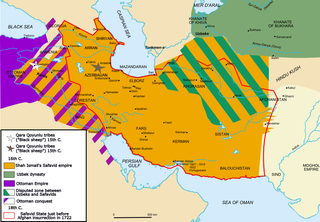
The Ottoman–Safavid War of 1623–1639 was the last of a series of conflicts fought between the Ottoman Empire and Safavid Iran, then the two major powers of Western Asia, over control of Mesopotamia. After initial Persian success in recapturing Baghdad and most of modern Iraq, having lost it for 90 years, the war became a stalemate as the Persians were unable to press further into the Ottoman Empire, and the Ottomans themselves were distracted by wars in Europe and weakened by internal turmoil. Eventually, the Ottomans were able to recover Baghdad, taking heavy losses in the final siege, and the signing of the Treaty of Zuhab ended the war in an Ottoman victory. Roughly speaking, the treaty restored the borders of 1555, with the Safavids keeping Daghestan, Shirvan, eastern Georgia, and Eastern Armenia, while western Georgia and Western Armenia decisively came under Ottoman rule. The eastern part of Samtskhe (Meskheti) was irrevocably lost to the Ottomans as well as Mesopotamia. Although parts of Mesopotamia were briefly retaken by the Iranians later on in history, notably during the reigns of Nader Shah (1736–1747) and Karim Khan Zand (1751–1779), it remained thenceforth in Ottoman hands until the aftermath of World War I.
Nişancı Ahmed Pasha, also called Şehla Ahmed Pasha, Hacı Şehla Ahmed Pasha, or Kör Vezir Ahmed Pasha, was an Ottoman Grand Vizier during the reign of Mahmud I. He was also the Ottoman governor of Egypt from 1748 to 1751.

The Ottoman–Persian War of 1743–1746 was fought between the Ottoman Empire and Afsharid Iran.

The campaigns of Nader Shah, or the Naderian Wars, were a series of conflicts fought in the early to mid-eighteenth century throughout Central Eurasia primarily by the Iranian conqueror Nader Shah. His campaigns originated from the overthrow of the Iranian Safavid dynasty by the Hotaki Afghans. In the ensuing collapse and fragmentation of the empire after the capture of the Iranian capital of Isfahan by the Afghans, a claimant to the Safavid throne, Tahmasp II, accepted Nader into his service. After having subdued north-west Iran as well as neutralising the Abdali Afghans to the east as well as turning Tahmasp II into a vassal, Nader marched against the Hotaki Afghans in occupation of the rest of the country. In a series of incredible victories the Afghans were decimated and Tahmasp II returned to the throne as a restored Safavid monarch.

The Battle of Yeghevārd, also known as the Battle of Baghavard or Morad Tapeh, was the final major engagement of the Perso-Ottoman War of 1730–1735 where the principal Ottoman army in the Caucasus theatre under Koprulu Pasha's command was utterly destroyed by only the advance guard of Nader's army before the main Persian army could enter into the fray. The complete rout of Koprulu Pasha's forces led to a number of besieged Ottoman strongholds in the theatre surrendering as any hope of relief proved ephemeral in light of the crushing defeat at Yeghevārd. One of Nader's most impressive battlefield victories, in which he decimated a force four or five times the size of his own, it helped establish his reputation as a military genius and stands alongside many of his other great triumphs such as at Karnal, Mihmandoost or Kirkuk.

The siege of Baghdad (1733) was a relatively short but intense siege of Ottoman-held Baghdad by the Persian army under Nader. The outcome was determined not at Baghdad but ultimately far to the north near Samara where a large relief force commanded by the Topal Pasha inflicted a decisive defeat on Nader's Persian army. The Persian besiegers were forced away with the loss of most of their equipment and saving a much exhausted garrison desperate for relief.

The Battle of Samarra was the key engagement between the two great generals Nader Shah and Topal Osman Pasha, which led to the siege of Baghdad being lifted, keeping Ottoman Iraq under Istanbul's control. The armed contest between the two colossi was very hard fought with a total of roughly 50,000 men becoming casualties by the end of the fighting that left the Persians decimated and the Ottoman victors badly shaken. Other than its importance in deciding the fate of Baghdad, the battle is also significant as Nader's only battlefield defeat although he would avenge this defeat at the hands of Topal Pasha at the Battle of Agh-Darband where Topal was killed.

The Caucasus Campaign of 1734–1735 was the last great campaign of the Ottoman–Persian War (1730–35) which ended in a Persian victory allowing Nader to recast Persian hegemony over almost the entire Caucasus, region, reconquering it for the Safavid state.
The siege of Ganja during the last phase of the Perso-Ottoman war of 1730–1735 resulted in the surrender of the city by its Ottoman garrison after a brave defense was rendered futile by the destruction of the main Turkish army marching to its relief in the battle of Baghavard.
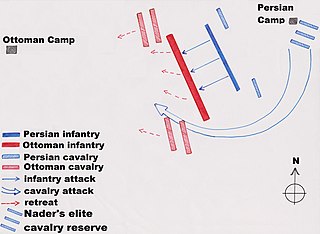
The Battle of Kars was the last major engagement of the Ottoman-Persian War. The battle resulted in the complete and utter destruction of the Ottoman army. It was also the last of the great military triumphs of Nader Shah. The battle was in fact fought over a period of ten days in which the first day saw the Ottomans routed from the field, followed by a series of subsequent blockades and pursuits until the final destruction of the Ottoman army. The severity of the defeat, in conjunction with another defeat near Mosul, ended any hopes of Ottoman victory and forced them to enter into negotiations with a significantly weaker position than they would otherwise have occupied.

Nader's Dagestan campaign, were the campaigns conducted by the Persian Empire under its Afsharid ruler Nader Shah between the years 1741 and 1743 in order to fully subjugate the Dagestan region in the North Caucasus Area. The conflict between the Persian Empire & the Lezgins and a myriad of other Caucasian tribes in the north was intermittently fought through the mid-1730s during Nader's first short expedition in the Caucasus until the last years of his reign and assassination in 1747 with minor skirmishes and raids. The incredibly difficult terrain of the northern Caucasus region made the task of subduing the Lezgins an extremely challenging one. Despite this Nader Shah gained numerous strongholds and fortresses from the Dagestanis and pushed them to the very verge of defeat. The Lezgins however held on in the northernmost reaches of Dagestan and continued to defy Persian domination.

Bash Tapia Castle, also known as Bashtabiya Castle or Pashtabia Castle, is a ruined 12th-century castle located on the western bank of the Tigris river, forming part of the city wall of Mosul, Iraq. It was partially destroyed by the Islamic State of Iraq and the Levant (ISIL) in April 2015.
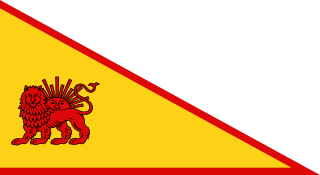
The military forces of the Afsharid dynasty of Iran had their origins in the relatively obscure yet bloody inter-factional violence in Khorasan during the collapse of the Safavid state. The small band of warriors under local warlord Nader Qoli of the Turkoman Afshar tribe in north-east Iran were no more than a few hundred men. Yet at the height of Nader's power as the king of kings, Shahanshah, he commanded an army of 375,000 fighting men which, according to Axworthy, constituted the single most powerful military force of its time, led by one of the most talented and successful military leaders of history.
The siege of Mosul was the siege of the Ottoman-held city of Mosul in northern Mesopotamia by Nader Shah's army during the Persian invasion of the Ottoman Empire in 1743.
Morteza Mirza Afshar was an Afsharid prince and the son of Nader Shah of Persia, who was renamed Nassrollah Mirza in honour of his role in the victory at Karnal. He proved to be a talented military leader and demonstrated his worth during the battle of Karnal by commanding the centre of the Persian army which defeated Sa'adat Khan's forces and captured his person.
